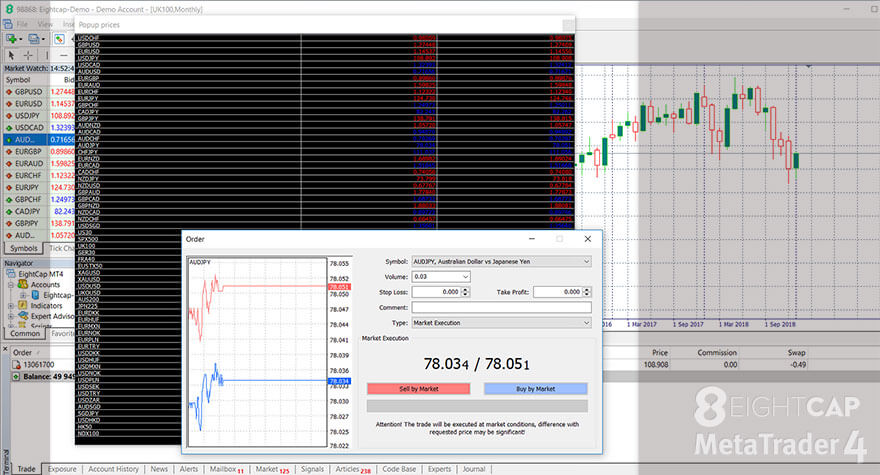How to use the Navigator and Market Watch Panels in MetaTrader 4?

Eightcap allows you to trade Forex, CFDs and more with the market-leading MetaTrader 4 platform. With many advanced features and trading tools, combined with its intuitive interface, the MT4 trading platform allows you to easily navigate through your accounts, templates, and orders.
This article will help you to take full advantage of them. In case you are using MetaTrader 5, please read our MT5 article.
This MetaTrader 4 tutorial will teach you how to:
- Show/hide the Market Watch and Navigator windows;
- Switch and add accounts in the Navigator;
- Open and log into accounts; Change passwords;
- Manage and buy indicators from the Navigator;
- Manage EAs in the Navigator;
- Place orders from the Market Watch;
- Modify the Market Watch;
- Open charts, Depth of Market;
- Use the Specification menu;
How to use the Navigator window in MT4
The Navigator window in MetaTrader 4 gives you access to a lot of important components of your trading platform like your accounts, expert advisors and indicators.
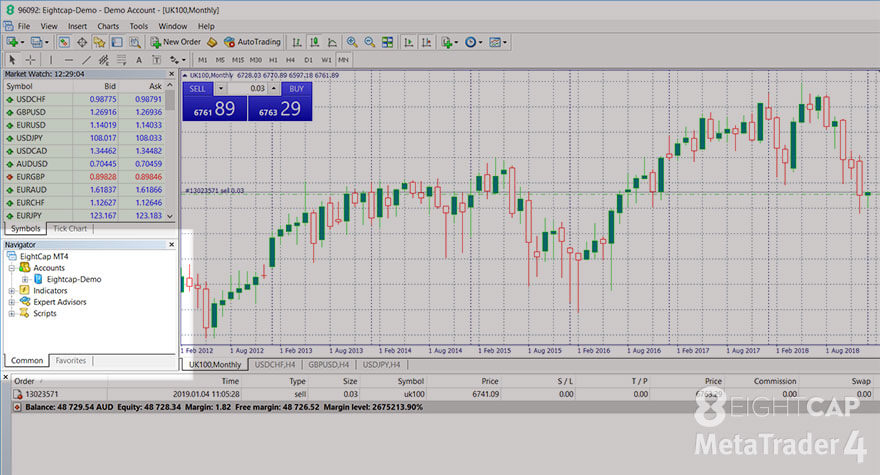
If you cannot see the Navigator in your MT4 use “Ctrl + N” or select “Navigator” from the “View” main menu.
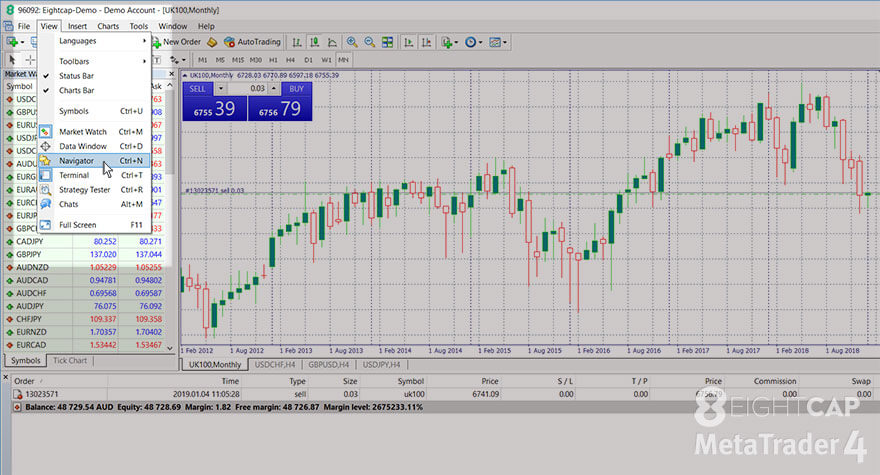
You can also simply click the Navigator button from the Toolbar.
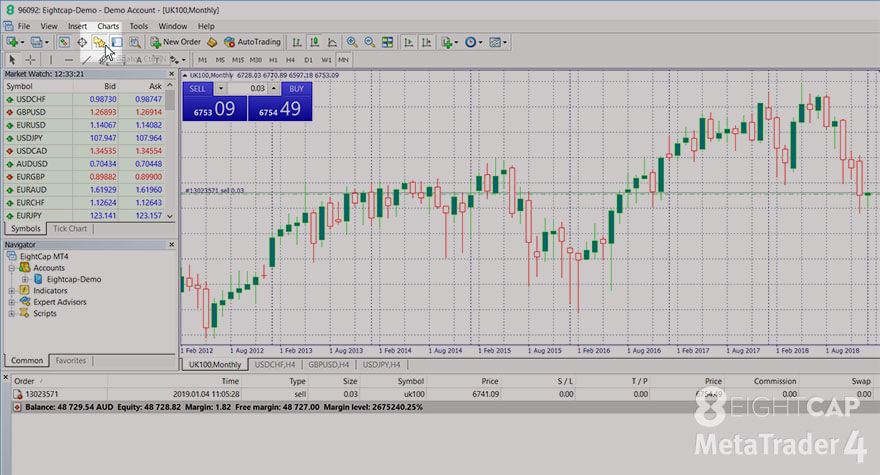
You can close the window in the same way.
Step 1 – Manage your accounts with the MT4 Navigator
The available accounts and tools are grouped and can be expanded by clicking on the little “+” in front of them.
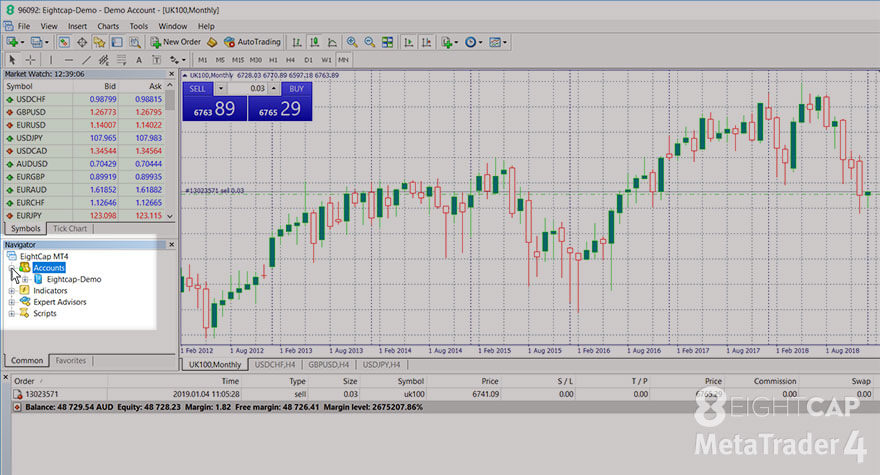
The Accounts group allows you to conveniently switch between your accounts, as well as to open new and delete accounts. To open the context menu right-click on the group. The first option you will notice is “Open an account”. You can open as many as accounts as you need.
Please note this function only opens a new Demo account, not a Live trading account. That needs to be requested via email or EightCap’s Client Portal.
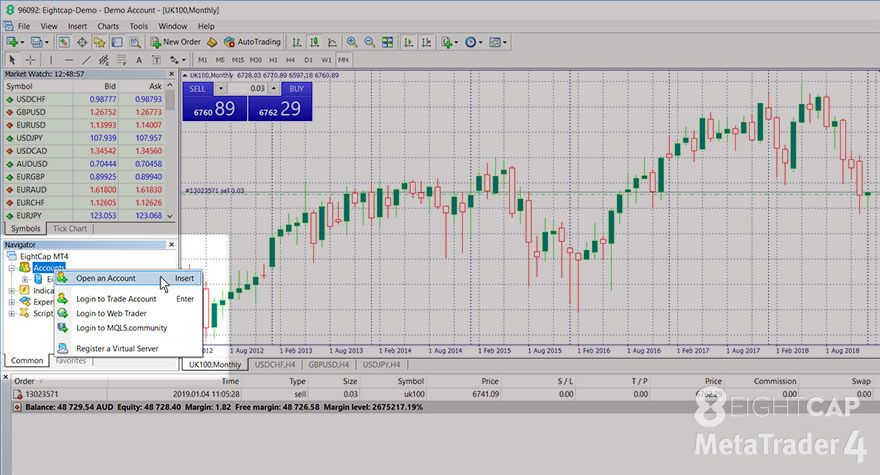
Login and switch between accounts
The “Login to Trade Account” option allows you to switch to already created trading account. To switch accounts, you can also simply double-click on the desired account. A pop-up window will prompt you to confirm your password before logging in. Any account you log into will be saved to these folders.
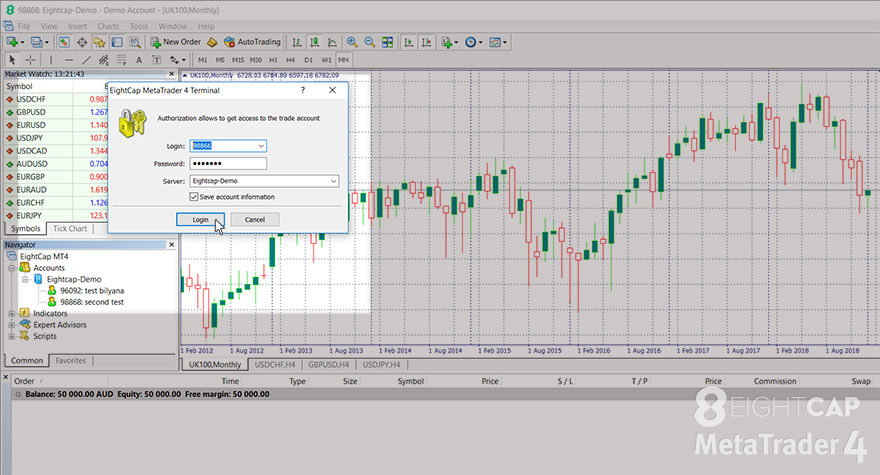
To learn more about account opening and logging in, please read our “Download, Install and Login to the MetaTrader 4 Platform” and “Open New Demo Account in MetaTrader 4” guides.
Web Trader
The “Login to Web Terminal” directly opens the web version of the platform in your browser. You can log into the Web Trader with the same credentials. To access the EightCap version of the Trader with all languages we support, go to webtrader.eightcap.com However, currently, the Web Trader is available only to MetaTrader 5 accounts.
Change Passwords
If you want to delete or change the password for a certain account, select “Change Password” or “Delete” from the context menu.
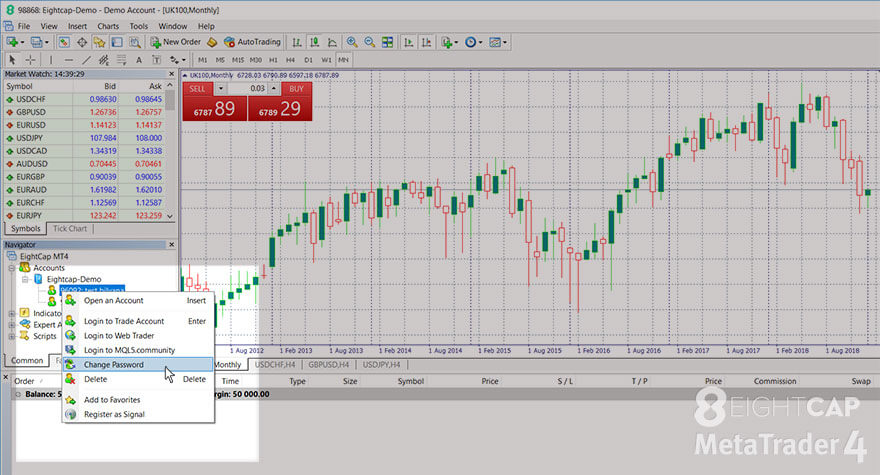
To learn how to change your account password, please read our “How do I change my MetaTrader 4 password?” guide.
If you have registration with MQL5. community you are able to register the selected account with the “Signals” service. You can also add the account to your Favourites or add a third-party VPS. The accounts or tools marked as favourites can be found in the Favourites tab in the Navigator.
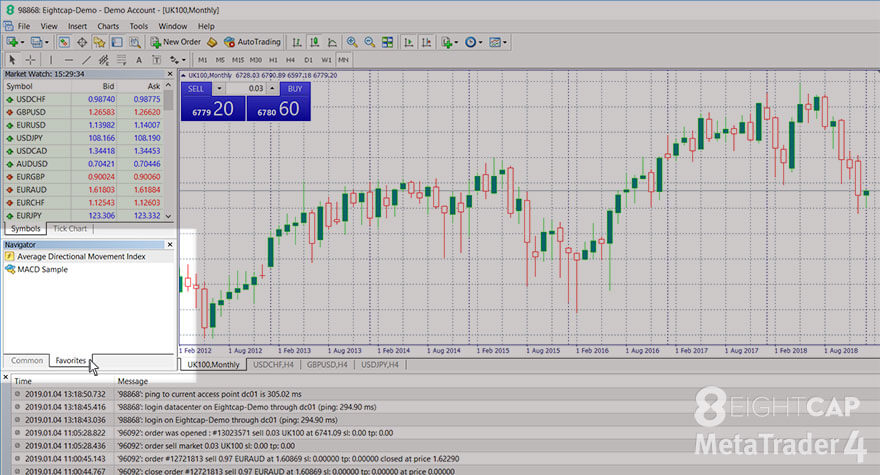
Step 2 – Manage indicators in the MT4 Navigator
The Indicators group allows you to easily add any indicator to your chart by right-clicking on the indicator and selecting “Attach to a chart” or simply by dragging it to the chart or double-clicking the indicator.
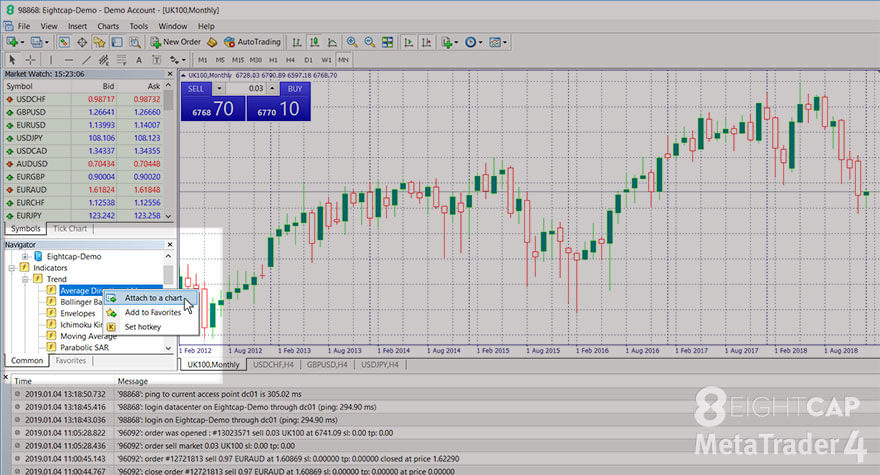
To learn more about using indicators, please read our “Add indicators and edit charts” guide.
If you create some custom indicators they will be in their own group.
If the indicator has a small circle on top of its icon, the context menu will give you more options including to modify or delete the indicator from the Navigator. Selecting “Modify” will enable you to edit the source code in MetaEditor. And “Create in MetaEditor” enables you to create your own custom indicator.
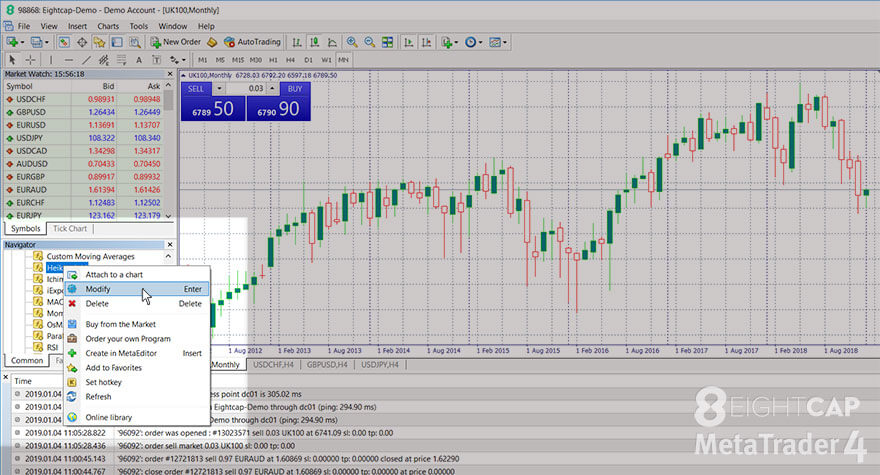
“Order your own Program” and “Online library” are other options available for the members of the MQL5. Community.
“Buy from the Market” opens the application store in the MT 4 terminal and “Set hotkey” allows you to set a hotkey for the indicator.
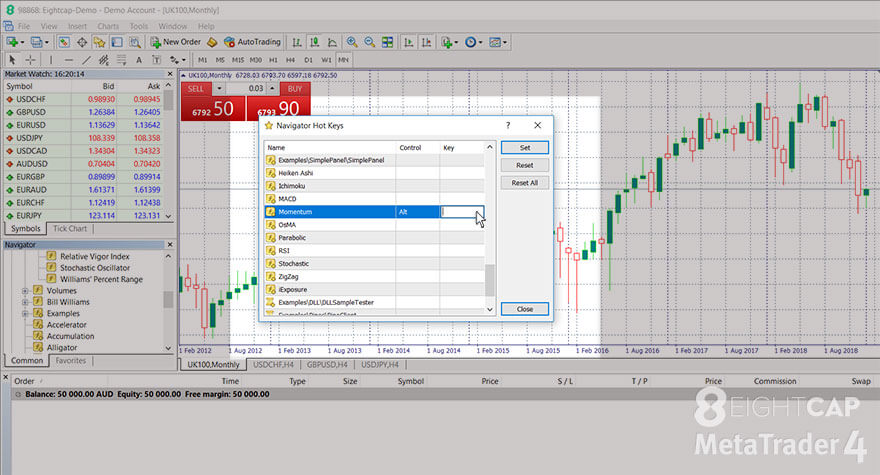
Note that custom hotkeys overwrite predefined ones.
“Refresh” is an important option recommended when you copy already compiled files to the folder.
Step 3 – Manage Expert Advisors in the MT4 Navigator
The Expert Advisors (EAs) group, like the indicators group, contains all expert advisors available on your platform. Expert Advisers help you automate your trading and analytics. Their context menu is the same as the Indicators menu.
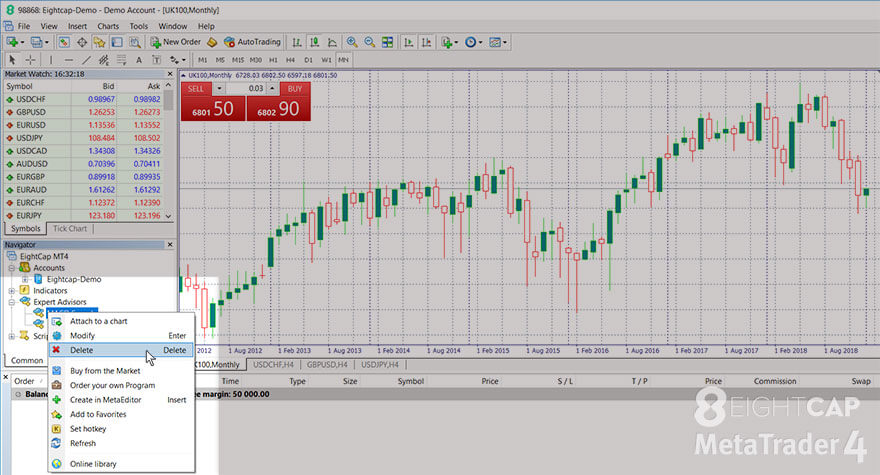
To learn more about using EAs, please read our “How to install and use expert advisers (robots) on your MetaTrader 4 platform?” guide.
The Market Watch window in MT4
The Market Watch includes all assets (symbols) available for you to trade. The table in this window includes the Symbol name, the Bid and Ask prices and the platform time in the left upper corner. You can drag symbols across the list to rearrange them.
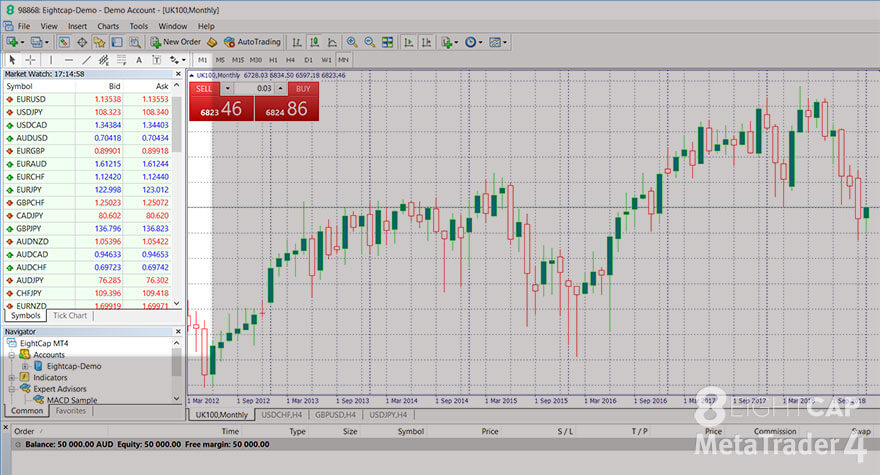
The Market Watch window can be opened and closed by pressing the hotkeys “Ctrl+M” or selecting “Market Watch” from the “View” menu.
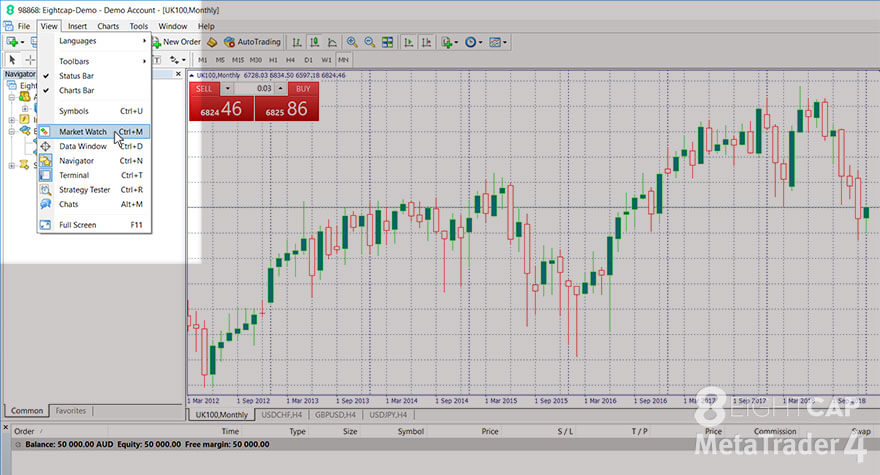
You can also simply click the Market Watch button from the Toolbar.
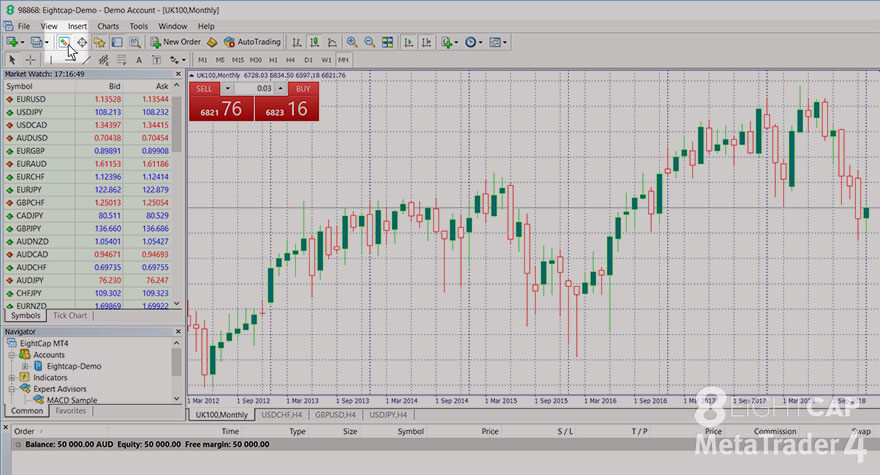
Step 1 – Placing orders
From the Market Watch, you can most easily open charts for all markets available and place trades. On a right click, a big context menu appears. The top command allows you to modify and place orders. The “New Order” window can be also open by double-clicking on at the selected asset or with the “F9” key.
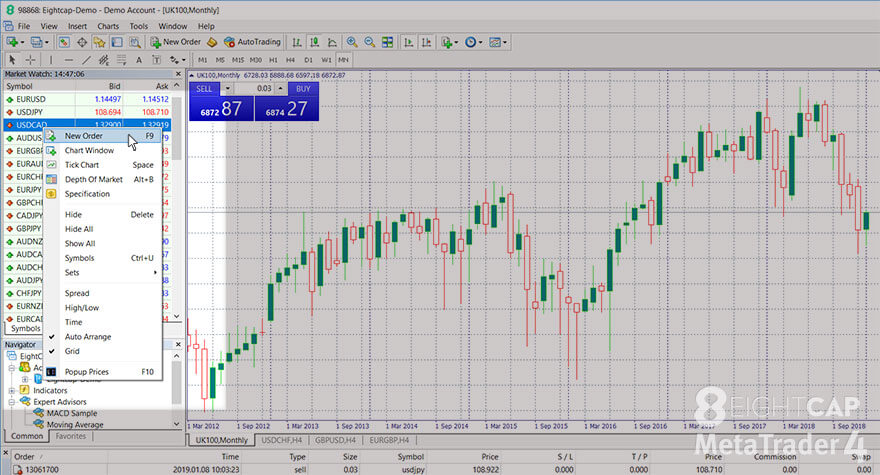
To learn more about placing trades, please read our “How to open and close trades in MetaTrader 4” guide.
Step 2 – Manage Charts
The “Chart Window” lets you open the chart of a selected symbol. You can also do that by dragging the symbol directly in the Chart window with the mouse.
To learn more about placing trades, please read our “How to manage charts in MetaTrader 4” guide.
By selecting “Tick Chart” from the menu or switching the tabs on the bottom opens the tick chart of the selected instrument (in the same window) and shows in a very clear manner the price movement of the selected instrument.
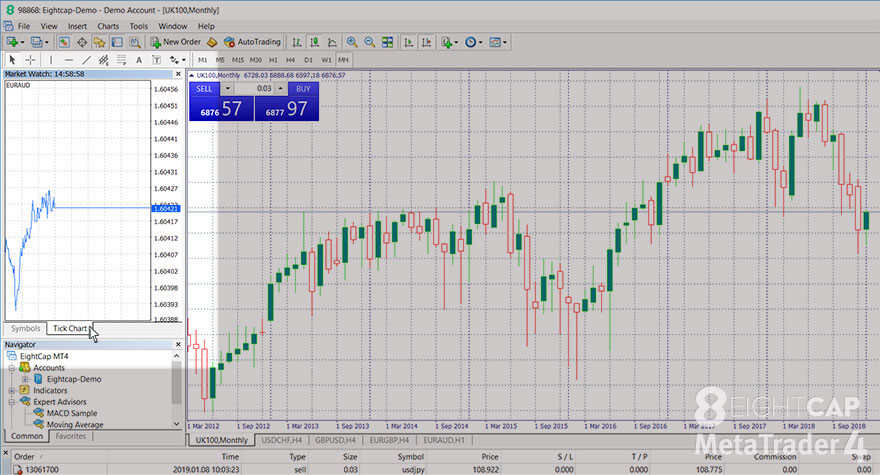
Step 3 – Explore the Depth of market
The “Depth Of Market” command (Alt + B) shows buy and sell orders for the selected instrument at the best market prices at the given moment. The depth of the market and the liquidity are strongly correlated. If more orders are executed at each price, the market depth and liquidity normally increase.
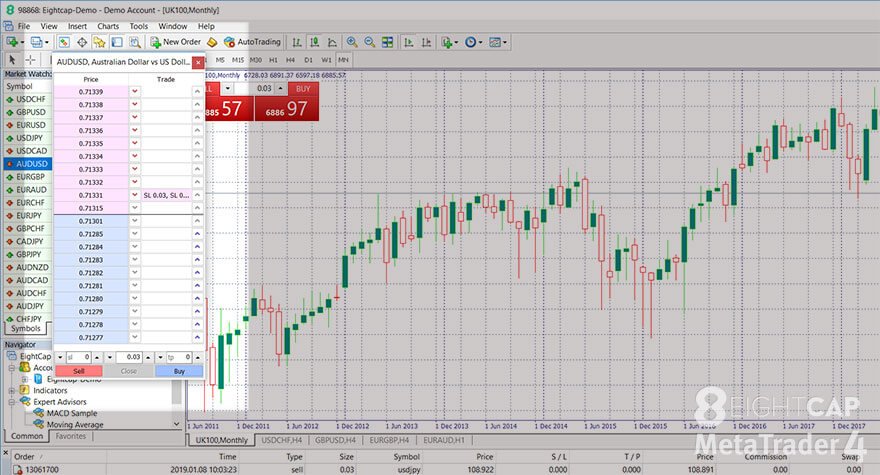
Step 4 – Use Specifications and custom settings to trade better
When selecting “Specification”, a window with the symbol’s parameters opens where you can look up spreads, margins, contract size, stop level, minimal and maximal volume, swap long and short, trading sessions etc.
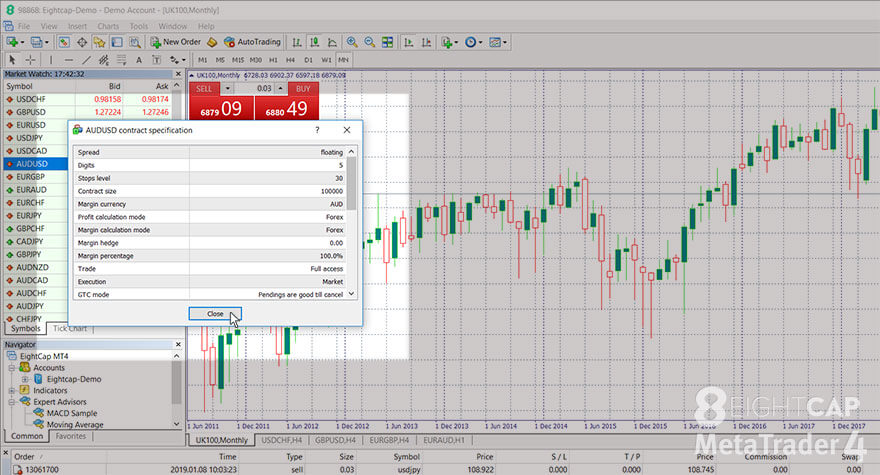
To learn more about assets’ specifications, please read our “Find volume, contract size, swap rates and more specifications on MetaTrader4” guide.
The next few options: “Hide”, “Hide All”, “Show All” and “Symbols” allow you to add and remove symbols to the list. Note that if there are any open positions or charts for a symbol, it won’t be closed.
“Show All” is used to display all available markets to the trader. Once all symbols are displayed you can search through them by the first letter with your keyboard.
“Symbols” opens an additional window that allows selecting whether to add or remove symbols, which are grouped by type.
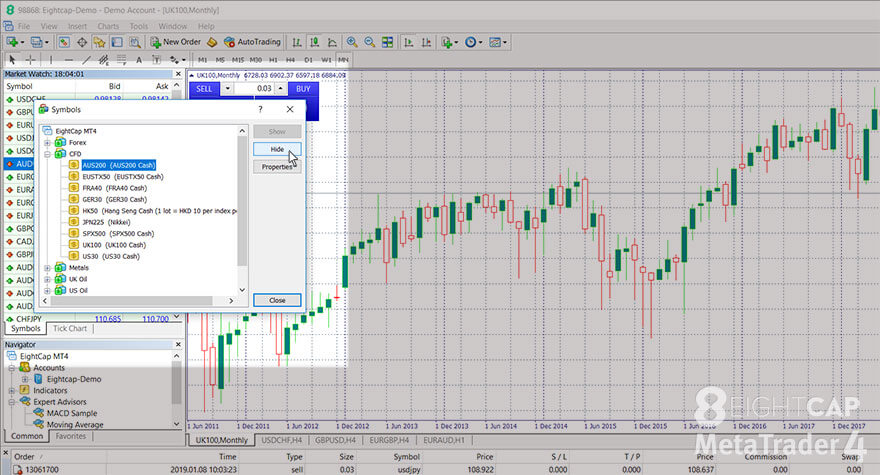
“Sets” enables you to save your current set of symbols or load an existing one.
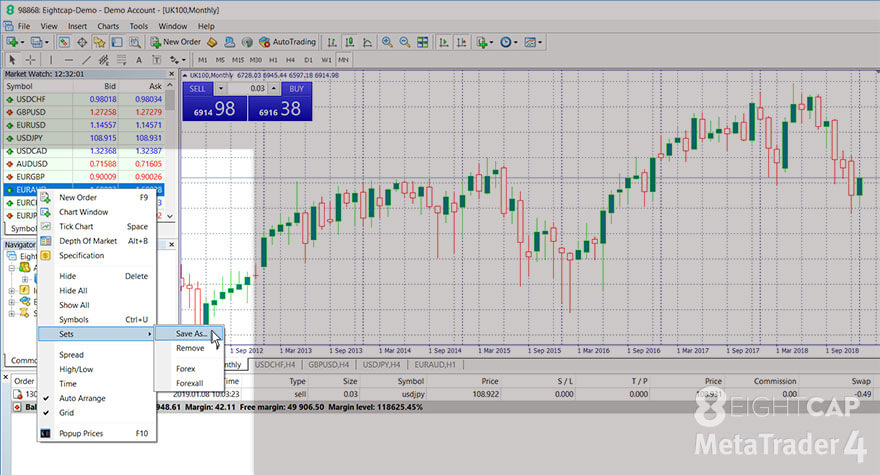
The next 5 options can be ticked to show or hide additional columns in the Market Watch:
- “Spread”, naturally, shows the difference between the bid and ask prices.
- “High/Low” displays the highest and the lowest daily values of the quoted price.
- When “Grid” is enabled the grid separating the columns in the Market Watch is visible.
- “Auto Arrange” is ticked by default to automatically rearrange the columns when the window size is modified.
This is how the ‘’Market Watch’’ looks like when all columns are included:
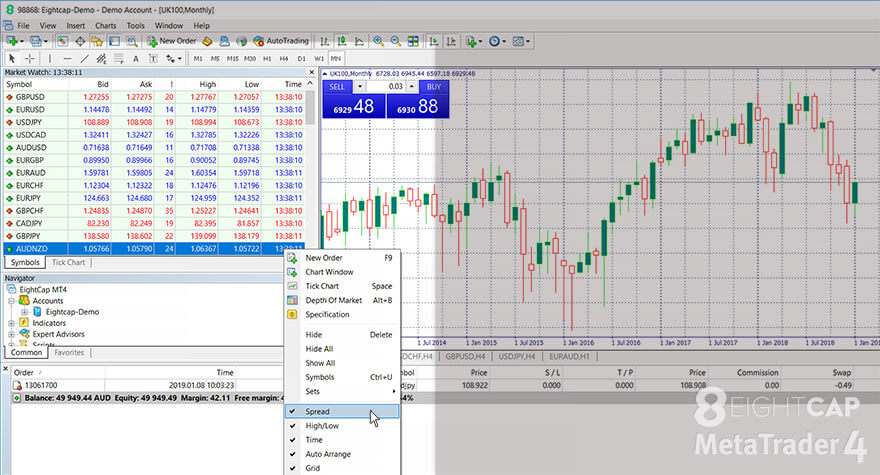
Step 5 – Display Popup prices
‘’Popup Prices’’ opens a new pop-up window with the same list of symbols displayed in the “Market Watch”, but with the prices as they are in the time of execution of the command. The price changes in the “Market Watch” list don’t affect the price changes in the “Popup Prices” window. This is mostly informational feature, but the trader can open the Order window from here as well. You can also simply press ‘’F10’’ to open it.
